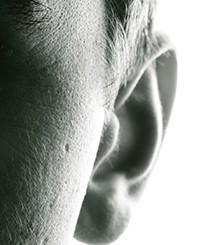Peer Reviewed
Feature Article Ear, nose and throat medicine
The discharging ear: an approach to assessment
Abstract
Taking a history is an essential part of the assessment of patients with ear pathology. A significant number of conditions can be diagnosed based simply on this. It is especially important to find out the type of discharge present: purulent or mucoid, clear or blood stained.
Key Points
- The discharging ear can represent a large variety of conditions that can occur in patients of any age.
- Taking a history is an essential part of the assessment of patients with ear pathology.
- Common causes of purulent or mucoid discharge include otitis externa, infected perforation, foreign body or infected cholesteatoma.
- Clear discharge is an uncommon form of otorrhoea in general practice. Usually the history is indicative of the underlying aetiology.
- Blood-stained discharge usually causes significant concern to the patient. It has a range of possible causes from more benign pathology such as acute otitis media to more serious concerns such as middle ear or ear canal tumours.
- Classifying the type of discharge present allows the various common aetiologies to be considered, enabling accurate treatment and/or referral of the patient.
Purchase the PDF version of this article
Already a subscriber? Login here.

